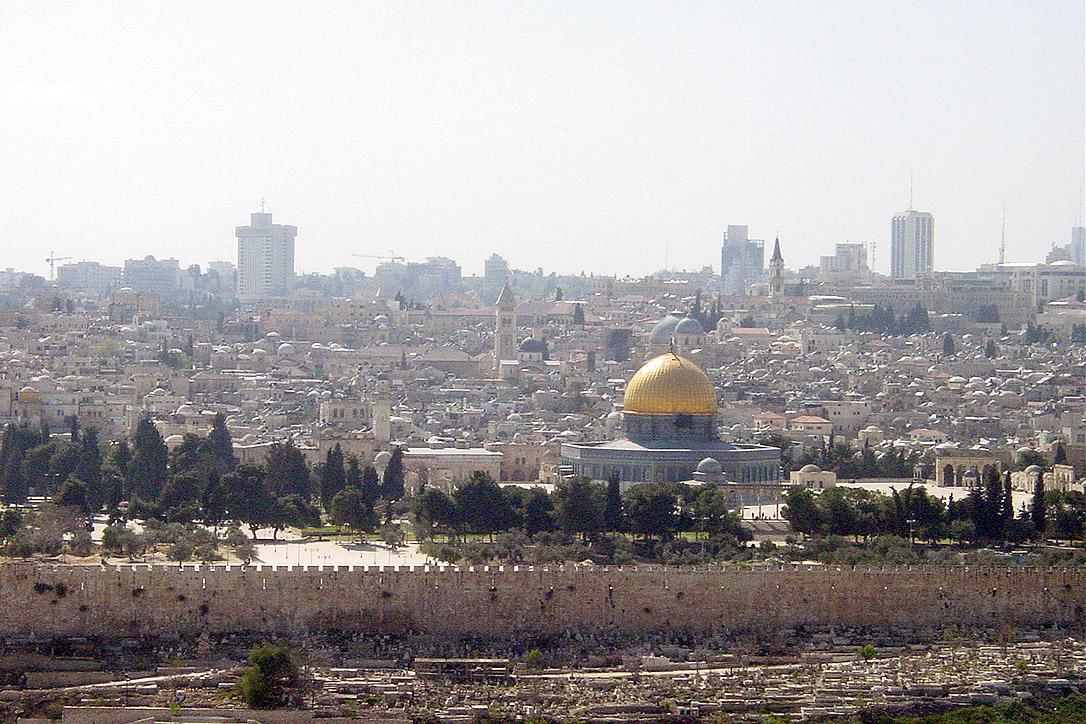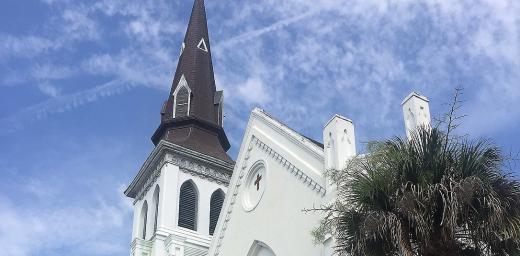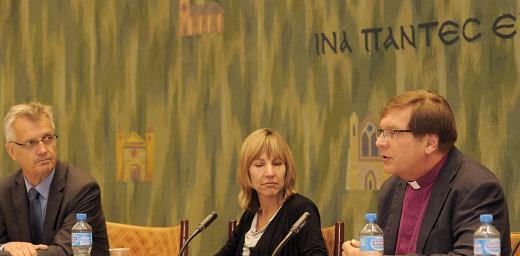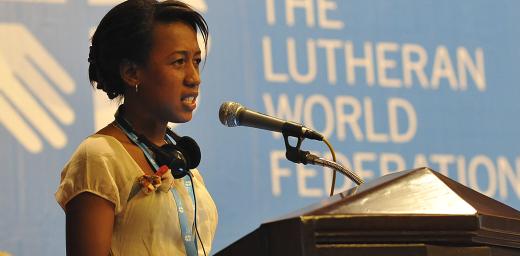LWF Council Adopts Statement on Conduct on Holy Sites

Jerusalem. Photo: LWF/D. Harris
Calling for Respect of Spiritually Significant Places
(LWI) - The Council of The Lutheran World Federation (LWF) at its 2014 meeting endorsed the Universal Code of Conduct on Holy Sites. This document, developed in consultation with religious leaders and experts from many of the world’s major faiths, makes ten provisions on the establishment of, preservation of, access to and prevention of conflict around religious sites worldwide.
The recommendations include the handling of sites sacred to different faiths as well as cases of expropriation and nationalization. The Council also encouraged member churches to support initiatives in their context and called upon the United Nations to adopt a UN resolution in the spirit of the Code.
The adoption of the statement was initiated by LWF President Bishop Dr Munib A. Younan.
“We continually notice that many holy places throughout the world are being attacked for both political and religious reasons,” said Younan, who is also Bishop of the Evangelical Lutheran Church in Jordan and the Holy Land.
“We are dismayed and wonder why these holy places have become a legitimate target during conflict. All holy places should be places for worship, for meditation, for prayer, and for coming nearer to the God who sends us into the world to be pilgrims of justice, peace, and reconciliation.”
Overcoming Past Differences in Canada
An example of a holy site used by different faith groups was shared by Council adviser Bishop Cindy Halmarsson of the Saskatchewan synod in Canada.
For centuries, the prairie province had been inhabited by aboriginal First Nations such as the Young Chippewayan. In 1876, at the signing of treaty 6 the land was set aside as a reservation, but due to many circumstances the band was scattered and they settled in various places. The reservation later was taken back by the Canadian government and opened up to settlement.
Stony Knoll, a hill overlooking plains and wheat fields between the North and South Saskatchewan river, had been holy land to the Young Chippewayan. It has a long history as a place where First Nation people gathered for ceremony and prayer.
When the land was settled by Lutheran settlers in the late 19th century, this mound was chosen as the prefect spot to build their place of worship, a church and a graveyard.
It took more than a hundred years for three parties to come together and agree on a common use of this place sacred to all of them. In 2006 Lutherans, Mennonites and Young Chippewayan in a traditional ceremony signed a memorandum of understanding.
While the First Nation tribe vowed to respect the current ownership of the land by the Christian congregations, Mennonites and Lutherans promised to support the Young Chippewayan’s ongoing claim for compensation for the land they lost 130 years ago.
Stony Knoll, a place of interreligious dispute, now bears testimony to interfaith relations between Protestants and First Nations in Canada.
Public Statement on Universal Code of Conduct on Holy Sites | More Council 2014 Documents





